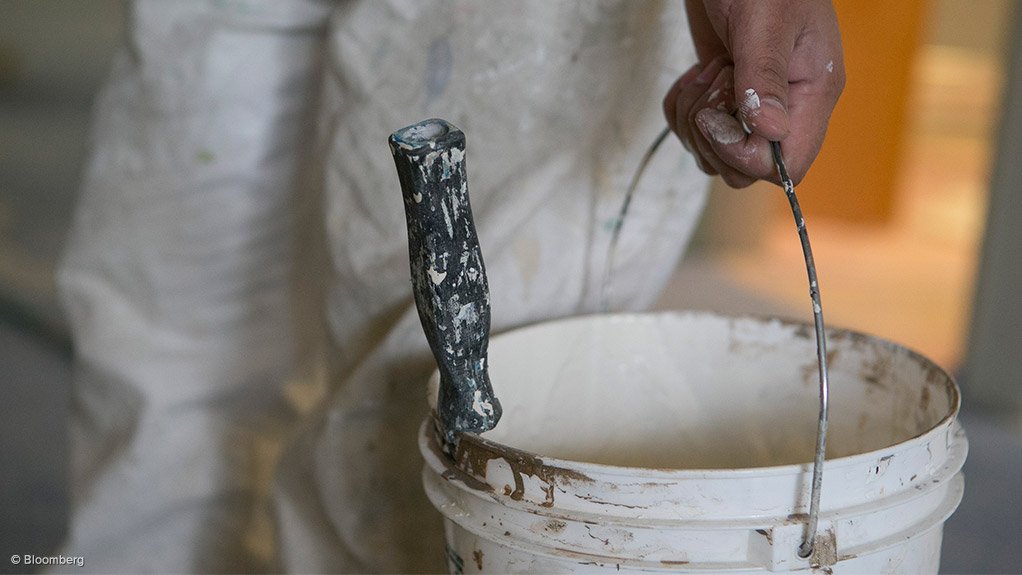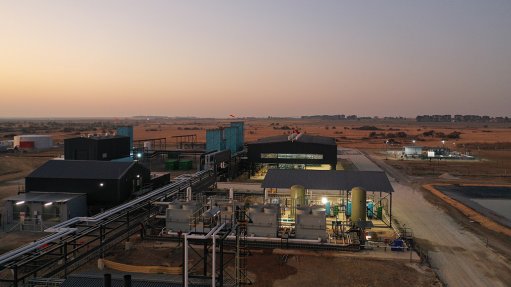Cool coatings project designed to limit buildings’ energy use


REDUCED ENERGY CONSUMPTION The Cool Surfaces project forms part of Sanedi’s drive to make paints, coatings and paint membranes more energy efficient
The South African National Energy Development Institute (Sanedi) has established the South African Cool Surfaces Association (Sacsa), administered by the Association of Architectural Aluminium Manufacturers of South Africa (AAAMSA), to govern and regulate Sanedi’s surface-cooling project, the Cool Surfaces project, which is designed to limit the use of energy in the residential building sector.
Sanedi project officer Denise Lundall told delegates at the Coatings for Africa Conference, which took place at the Sandton Convention Centre, in Johannesburg, in May, that the Cool Surfaces project was assessing paints that would keep surfaces cool, having already considered how to manufacture energy efficient windows to keep buildings cool, insulated and warm.
The Cool Surfaces project forms part of Sanedi’s drive to make paints, coatings and paint membranes more energy efficient.
Lundall noted that the easiest point of entry to ensure that surfaces remain cool was paint, adding that a cool roof was a surface coated with the correct paint so that it could reflect light and heat away from its surface.
She added that Sanedi had been focused on ensuring that the light and heat reflected by roof surfaces were not reflected into urban areas but dispersed into the atmosphere.
Therefore, a special binder is added to the paint so that the heat reflected is absorbed into the atmosphere, allowing the roof and the air above the roof to remain cool, as well as the air inside the building. This means that, if a building that uses solar heaters and air conditioners has a cool roof, less air conditioning is needed to keep the building cool or warm.
“We want surface-cooling paint that protects the surface in summer and winter, and strengthens the integrity of the surface on which it is painted, thereby protecting and helping it to last longer,” said Lundall.
She emphasised the need for South Africa to use not only high-quality products but also high-quality applicators, as well as recognised builders and painters for coatings on buildings to remain sustainable. Part of the AAAMSA’s aim was to reintroduce skilled labour at an affordable price, she added.
Lundall explained that correctly applying a surface-cooling paint would result in reduced energy use in urban areas, thereby making it a more sustainable solution. Surface-cooling paint also strengthened the roofing material and kept a roof – and, by extension, a home – at least 4 °C to 10 °C cooler without using air conditioning.
Further, a direct environmental benefit was that the temperature decreased by 2 °C to 4 °C in cities where roofs were painted with surface-cooling paint. Lundall cited Spain, where areas of rooftops had been painted white, as an example of this phenomenon. This indicates that, by keeping the colour of paint either light or white, even without any binders in the paint, carbon dioxide emissions are reduced by 20% and, therefore, global warming is reduced.
Lundall stated that Sacsa would ensure that reputable companies bought reputable products, adding that there would have to be a register of all approved products to maintain control over registered products.
The association has drafted standards into the building codes that have been adapted from the American Cool Roofing Rating Council.
Further, for projects to be registered, the product has to be tested by Sacsa against the necessary standards. It is then given a rating that will indicate the testing and certification of the product on the product label, which becomes a quick and easy reference for consumers who can use it to check whether the price and the product match their requirements.
Lundall concluded that laboratories were established at the South African Bureau of Standards this year and that the association’s testing programme was well under way. A small factory was also being established in South Africa to create jobs and provide training.
Article Enquiry
Email Article
Save Article
Feedback
To advertise email advertising@creamermedia.co.za or click here
Comments
Announcements
What's On
Subscribe to improve your user experience...
Option 1 (equivalent of R125 a month):
Receive a weekly copy of Creamer Media's Engineering News & Mining Weekly magazine
(print copy for those in South Africa and e-magazine for those outside of South Africa)
Receive daily email newsletters
Access to full search results
Access archive of magazine back copies
Access to Projects in Progress
Access to ONE Research Report of your choice in PDF format
Option 2 (equivalent of R375 a month):
All benefits from Option 1
PLUS
Access to Creamer Media's Research Channel Africa for ALL Research Reports, in PDF format, on various industrial and mining sectors
including Electricity; Water; Energy Transition; Hydrogen; Roads, Rail and Ports; Coal; Gold; Platinum; Battery Metals; etc.
Already a subscriber?
Forgotten your password?
Receive weekly copy of Creamer Media's Engineering News & Mining Weekly magazine (print copy for those in South Africa and e-magazine for those outside of South Africa)
➕
Recieve daily email newsletters
➕
Access to full search results
➕
Access archive of magazine back copies
➕
Access to Projects in Progress
➕
Access to ONE Research Report of your choice in PDF format
RESEARCH CHANNEL AFRICA
R4500 (equivalent of R375 a month)
SUBSCRIBEAll benefits from Option 1
➕
Access to Creamer Media's Research Channel Africa for ALL Research Reports on various industrial and mining sectors, in PDF format, including on:
Electricity
➕
Water
➕
Energy Transition
➕
Hydrogen
➕
Roads, Rail and Ports
➕
Coal
➕
Gold
➕
Platinum
➕
Battery Metals
➕
etc.
Receive all benefits from Option 1 or Option 2 delivered to numerous people at your company
➕
Multiple User names and Passwords for simultaneous log-ins
➕
Intranet integration access to all in your organisation

















